Blue-Eyed White Cat Breeds

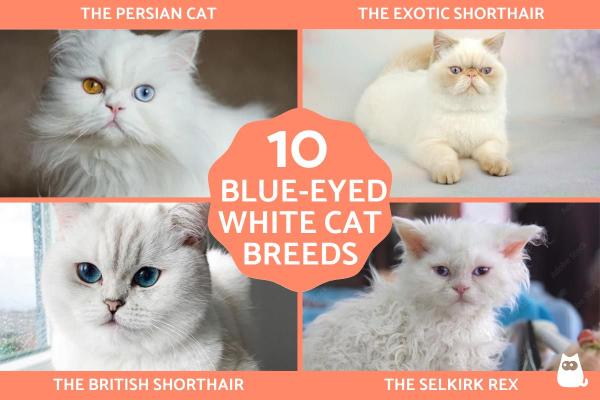

See files for Cats
The combination of pristine white fur and sapphire blue eyes is one of the most striking features a cat can have. While this distinct look appears in several breeds, it's more than just a beautiful trait. It's the result of fascinating genetics that can influence a cat's health and development. From ancient breeds like the Turkish angora to modern favorites like the ragdoll, various cats can display this eye-catching combination.
This AnimalWised article explores 10 blue-eyed white cat breeds. We'll also discover why some white cats have blue eyes, the connection to deafness.
- The Persian
- The Turkish Angora
- The Khao Manee
- The Exotic shorthair
- The British shorthair
- The British longhair
- The Kurilian bobtail
- The Ragdoll
- The Selkirk rex
- Albinism
The Persian
The Persian cat is one of the most recognized breeds worldwide.
Historical records show they first arrived in Europe in the 1620s, brought to Italy by Pietro della Valle during his travels through Persia (modern-day Iran).
Today, Persian cats come in many variations, defined by their coat colors and patterns. In the solid color category, white Persians stand out with three possible eye colors:
- Deep blue: the most sought-after combination in white Persians, particularly valued by breeders.
- Green: less common but creates a notable contrast with the white coat.
- Copper: ranges from light amber to deep copper tones.
White Persians can also have heterochromia, where each eye is a different color, usually one blue and one green or copper. This trait appears more often in white cats than in other colors.
It's worth noting that white Persian cats with blue eyes have a higher chance of being born deaf, though this doesn't affect their ability to be wonderful pets when kept indoors.
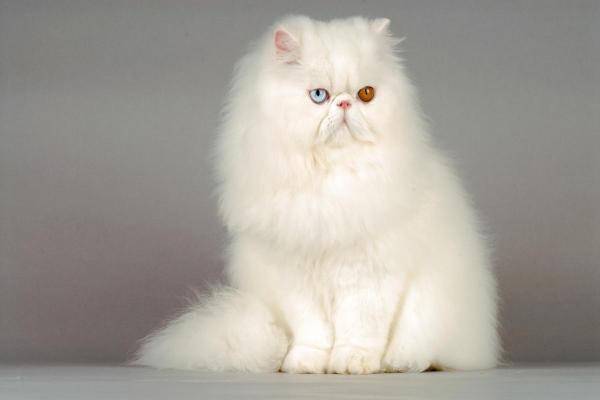
The Turkish Angora
The Turkish Angora, originating from Turkey, is one of the oldest known cat breeds. These cats naturally developed in the Ankara region (formerly Angora), adapting to the cold climate with their silky, flowing coat.
Their body is elegant and medium-sized. While historically only white Turkish Angoras were accepted for registration in their native Turkey and early cat shows, this wasn't because other colors didn't exist. They simply weren't recognized until the 1960s.
These cats are considered a national treasure in Turkey, with the Ankara Zoo maintaining a breeding program to preserve the white, blue-eyed bloodlines.
Like other white blue-eyed cats, they can carry the gene for congenital deafness, though odd-eyed cats typically have normal hearing in the ear on the non-blue-eyed side.
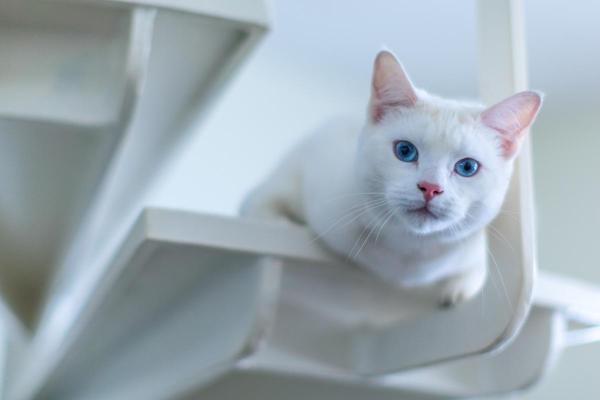
The Khao Manee
The Khao Manee, also known as the diamond eye cat, originates from Thailand and has a rich history dating back to the 14th century. These cats were indeed treasured by Thai royalty, and King Rama V was particularly involved in their breeding program during the late 1800s and early 1900s.
The breed's name translates to "white gem" in Thai. These cats have a muscular, athletic build with a pure white coat that is short and close-lying to the body. While heterochromia (different colored eyes) is well-known in this breed, the original Thai breeding standard actually preferred both eyes to be blue. Today, accepted eye color combinations include:
- Both eyes blue
- Both eyes green
- One blue and one green eye
- One blue and one amber eye
An interesting addition is that despite their ancient history in Thailand, the Khao Manee wasn't recognized by major Western cat registries until relatively recently. The International Cat Association (TICA) only granted them full championship status in 2015. In Thailand, they're still considered a symbol of good fortune and prosperity.
Wondering how to keep your white cat's coat pristine and healthy? Our care guide has all the tips you need for maintaining their stunning appearance.
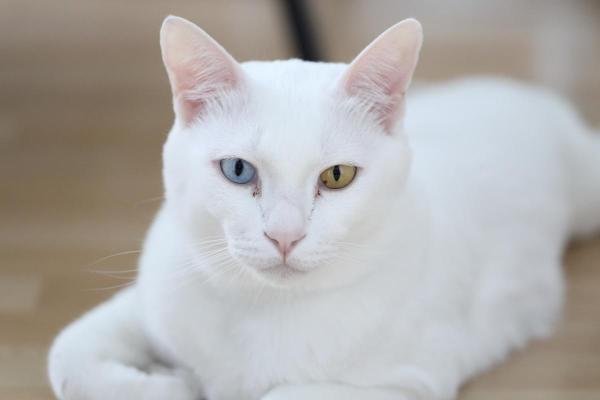
The Exotic shorthair
The exotic shorthair was developed in the United States in the 1960s through crossing Persian cats with American shorthairs. Later breeding programs occasionally included British shorthairs. The goal was to create a cat with the Persian's distinctive features but with a more manageable coat.
The exotic shorthair looks like a Persian with a plush, dense short coat, often called 'the lazy person's Persian.' They share all color and pattern varieties accepted in Persian cats, including:
- Pure white with blue eyes
- White with copper eyes
- White with odd-colored eyes (heterochromia)
Like their Persian ancestors, exotic shorthairs have a brachycephalic (flat-faced) structure. This facial structure can lead to health considerations such as breathing difficulties, especially in hot weather or during exercise, tear duct drainage issues that require regular cleaning and potential dental misalignment.
Unlike most cats who tend to be vocal when they want attention, exotic shorthairs rarely meow. Instead, they prefer to quietly follow their owners from room to room, earning them the nickname shadow cats.
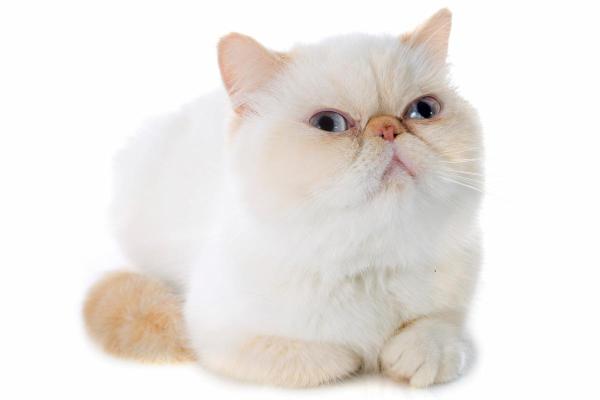
The British shorthair
The British shorthair has ancient roots in the United Kingdom, traditionally believed to descend from cats brought by Roman settlers. However, modern research suggests their documented breed history truly began in the Victorian era.
The breed almost disappeared during World Wars I and II, and was later revived through crosses with Persian cats, which slightly modified their appearance.
The British longhair variation emerged from these Persian crosses and was recognized as a separate breed in 2009. British shorthairs are medium-sized cats with a sturdy, compact build and a distinctive round face.
Their coat colors include:
- Pure white
- Blue (a blue-gray shade)
- Black
- Cream
- Red (also called ginger)
- Smoke (hair white at the base with colored tips)
In white British shorthairs, the eyes can be:
- Deep blue
- Copper
- Gold
- Odd-colored (one of each)
The British shorthair was the inspiration for the Cheshire Cat in Lewis Carroll's 'Alice in Wonderland,' which explains why the character is often portrayed with a round face and an enigmatic smile, matching the breed's characteristic features.
Already fallen in love with a white cat? The next step is choosing the perfect name! Check out our curated list of names perfect for your white feline friend.
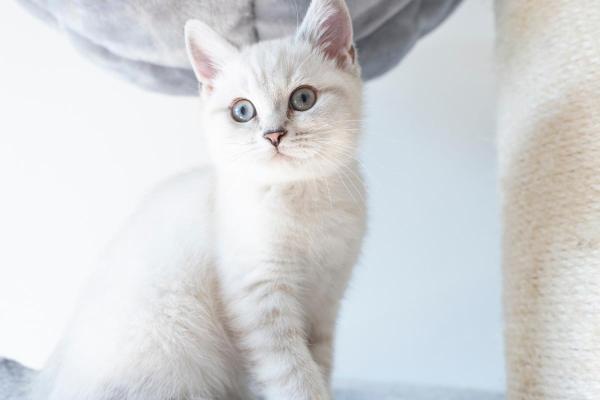
The British longhair
The British longhair inherits its diverse color range from both parent breeds, the Persian cat and the British shorthair. The breed showcases an impressive variety of colors and patterns, with around 300 recognized combinations. These include pure white coats as well as white with various markings in other colors.
White British longhairs can have:
- Blue eyes
- Green eyes
- Copper eyes
- Odd-colored eyes (heterochromia)
Despite their luxurious long coat, British longhairs have a different fur texture from Persians. Their coat is thick and plush but doesn't tangle as easily, making them relatively easier to groom than their Persian ancestors.
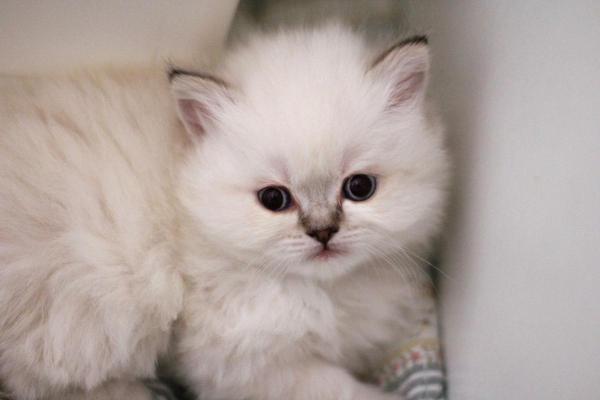
The Kurilian bobtail
The Kurilian bobtail developed naturally on the Kuril Islands, a volcanic archipelago that has been a subject of territorial dispute between Russia and Japan. While their exact origins remain unclear, these cats are believed to have existed on the islands for hundreds of years.
The breed can have either short or semi-long coat. Their coat patterns include:
- Pure white
- White with black (bi-color)
- White with other colors
- Various patterns with white always present
Their eyes are commonly blue.
Unlike most cat breeds, Kurilian bobtails are excellent swimmers and love playing in water, a trait likely developed from fishing in the rocky coastal waters of their island home.
The Ragdoll
The ragdoll was developed in California in the 1960s by Ann Baker. The breed is named for their tendency to go limp and relaxed when held, like a child's ragdoll toy. These are large, sturdy cats with semi-long fur and a color-point pattern.
While not exclusively white, ragdolls often have extensive white markings. All ragdolls are born pure white, gradually developing their darker points over several weeks.
Their eyes are always blue, ranging from pale ice-blue to deep sapphire, making them one of the most reliable breeds to find white cats with blue eyes.
Due to their pointed genes, pure white adult ragdolls don't exist within the breed standard, they always develop some color on their points. However, their face, chest, and paws often remain bright white throughout their lives.
Unlike most cats, ragdolls don't develop a thick undercoat. This means that despite their long fur, they shed less than many other long-haired breeds and are less prone to matting.
If you are enjoying learning about these stunning blue-eyed beauties, explore our complete guide to all white cat breeds.
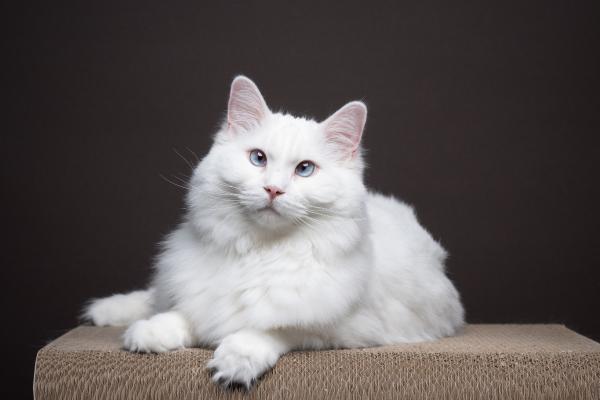
The Selkirk rex
The Selkirk rex originated in the United States in 1987, when a curly-haired kitten was born to a regular-coated cat. The breed is known for its unique curly coat, which is caused by a dominant genetic mutation. The curliness of their fur depends on their genetics:
- Cats with one copy of the rex gene have wavy hair
- Cats with two copies develop tight, corkscrew curls
Their coat can be either short or long, with a plush, soft texture.
The breed also comes in many colors and patterns, including:
- Pure white (can have blue eyes)
- Black
- Red
- Bi-color
- Pointed patterns
Unlike other rex breeds whose curly coats can become thinner with age, the Selkirk rex keeps its curls throughout its life. They're often called 'cats in sheep's clothing' due to their woolly appearance.
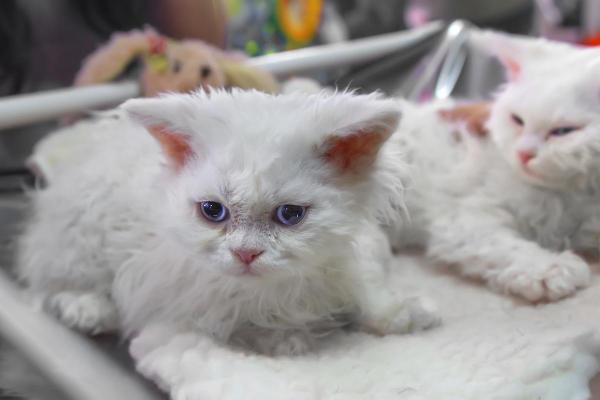
Albinism
While some white cats with blue eyes get these traits from their breed-specific genes, others display these features due to albinism. Not all white cats are albino, but albino cats can be identified by:
- Pure white coat
- Blue eyes (sometimes with heterochromia)
- Pink skin, including nose leather and paw pads
- Pink or reddish eyes in true albinos
The complete lack of pigmentation in albino cats makes them sensitive to several health issues:
- Increased sensitivity to sunlight
- Higher risk of skin cancer
- Vision problems due to light sensitivity
Due to these health concerns, breeding albino cats is not recommended, and early spaying or neutering is advised.
It's important to note that white cats with blue eyes, whether albino or not, have a higher chance of being deaf in one or both ears. The gene responsible for white coat and blue eyes affects the same stem cells that develop into inner ear cells during kitten development, explaining the connection between these traits and deafness.
Albino cats have special health considerations that set them apart from other white cats. Explore our complete care guide to learn how to best support these unique felines.
If you want to read similar articles to Blue-Eyed White Cat Breeds, we recommend you visit our Comparisons category.













